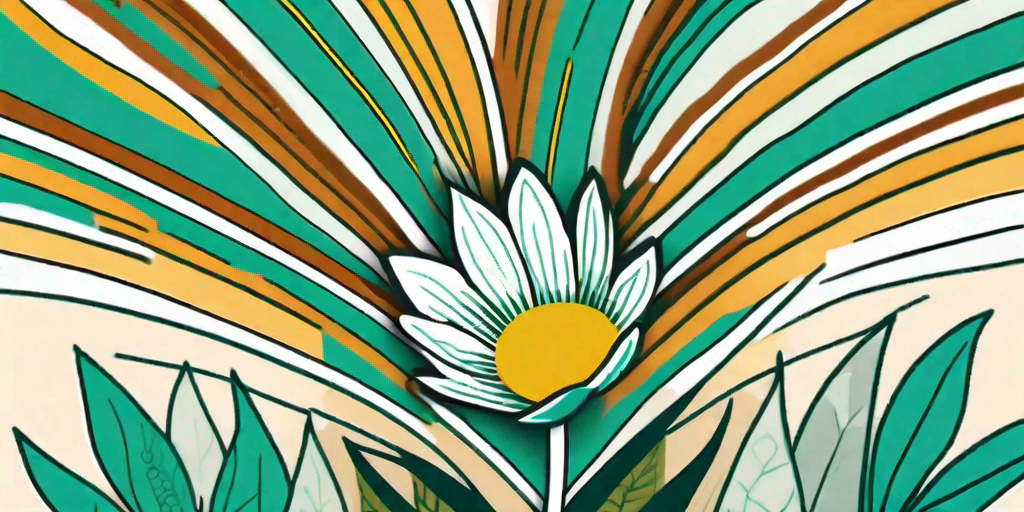
The Bloodroots Flower, or Sanguinaria canadensis if you want to get all scientific, is a fascinating specimen that's as intriguing as it is beautiful. Its name might sound like something out of a vampire novel, but rest assured, it's not as terrifying as it sounds. Unless you're a bug, of course. Then you might want to steer clear. But for us humans, there's a lot to love and learn about this unique bloom.
The Origin Story of the Bloodroots Flower
Where it all began
Like all good stories, the tale of the Bloodroots Flower starts with its origin. This little beauty is native to eastern North America, where it can be found happily growing in the wild. It's a woodland plant, which means it likes to keep things shady. Literally. It prefers the cool, damp conditions of the forest floor, beneath the cover of deciduous trees.
But don't be fooled by its humble beginnings. The Bloodroots Flower has a dramatic side, too. It's one of the first plants to bloom in the spring, bursting onto the scene with its bright white petals and yellow center. It's like the diva of the forest, making a grand entrance while everyone else is still waking up from winter.
The name game
So, why the bloody name? Well, it's not because the flower is a fan of horror movies. The name actually comes from the plant's root system. When you cut into the roots, they ooze a bright red sap that looks a lot like...you guessed it, blood. Hence, the name Bloodroots Flower. It's a bit gruesome, but hey, nature isn't always rainbows and butterflies.
And if you think that's cool, wait until you hear about the plant's scientific name, Sanguinaria canadensis. 'Sanguinaria' comes from the Latin word 'sanguinarius', which means 'bloody'. And 'canadensis' is Latin for 'from Canada'. So basically, the Bloodroots Flower's scientific name is 'bloody thing from Canada'. Talk about a badass name, eh?
Why the Bloodroots Flower is a Big Deal
The medicinal marvel
Now, the Bloodroots Flower isn't just a pretty face. It's also been used for centuries by Native Americans for its medicinal properties. The same red sap that gives the plant its name was used to treat a variety of ailments, from sore throats to warts. It was even used as a dye and a love charm. Talk about a multi-tasker!
But before you go digging up Bloodroots Flowers for your home pharmacy, a word of caution. The plant's sap is powerful stuff and can be toxic if used improperly. So leave the medicine making to the professionals, okay?
The bug buster
Remember when we said bugs should steer clear of the Bloodroots Flower? That's because this plant has a sneaky defense mechanism. The leaves of the Bloodroots Flower contain a toxin that can paralyze insects. It's like the plant's own personal bug zapper. So while it's beautiful to look at, bugs might want to admire from a distance.
But it's not all bad news for the bugs. The Bloodroots Flower is also a valuable source of early spring nectar for bees and other pollinators. So it's a bit of a love-hate relationship.
How to Grow Your Own Bloodroots Flower
Choosing the right spot
So, you want to grow your own Bloodroots Flower? Good for you! The first thing you'll need to do is find the right spot. Remember, this plant likes it shady. So choose a spot that gets partial to full shade. Under a tree or on the north side of your house would be perfect.
Next, you'll need to prepare the soil. The Bloodroots Flower likes rich, well-drained soil. So add some compost or organic matter to your planting area to give your plant the best start.
Planting and care
Once you've got your spot and your soil sorted, it's time to plant. Dig a hole that's about twice as wide and just as deep as the root ball of your plant. Place the plant in the hole, making sure the top of the root ball is level with the soil surface. Then backfill the hole, firm the soil gently, and water well.
After planting, care for your Bloodroots Flower by watering it regularly, especially during dry periods. You should also mulch around the plant to help conserve moisture and keep the roots cool.
FAQs about the Bloodroots Flower
Is the Bloodroots Flower poisonous?
Yes, the Bloodroots Flower is poisonous, especially the roots. The plant contains a toxin that can cause skin irritation and severe digestive upset if ingested. So while it's beautiful to look at, it's best to keep it out of reach of children and pets.
How big does the Bloodroots Flower get?
The Bloodroots Flower is a small plant, typically reaching only 6 to 9 inches in height. But what it lacks in size, it makes up for in beauty and intrigue.
Can I grow the Bloodroots Flower in a pot?
Yes, you can grow the Bloodroots Flower in a pot, as long as you provide the right conditions. Choose a shady spot, use a well-draining potting mix, and keep the soil consistently moist.
In Conclusion
So there you have it, the bloody beautiful story of the Bloodroots Flower. From its humble beginnings in the forests of North America to its role as a medicinal marvel and bug buster, this plant is truly one of a kind. And now that you know how to grow your own, you can add a touch of intrigue to your garden, too. Just remember to keep it away from the kids and the pets. And maybe the bugs, too.
Happy gardening!















